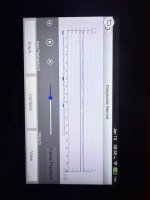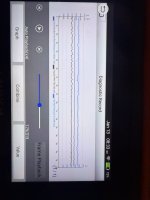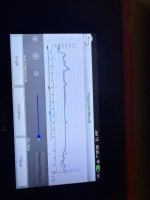Hey all long time viewer here.
Been scratching my head over this one for the last few days.
I've got a 2013 ram 2500 outdoorsman, south bend dual disk clutch, i believe a dsp 5 position tune switch, deleted, and a fleece cheeta turbo. I think right now im sitting at just under 110k on the clock. The truck has been running great for quite some time now and of course somethings gotta happen in the cold months of the year. I'm having a weird idle almost like someone threw a lope tune in the truck. It's not super consistant either sometimes it's constant and then it'll clean up. I threw my scan tool on it and recorded a bunch of info if it'd help any of you's help me figure this out. I figured I'd change fuel filters (stock) thinking they were gummed up and needed to be done anyways and that didn't solve it. Started poking around with the scan tool and noticed the High pressure command and actual seem to be kinda different. I notice sitting at idle the commanded seems to be pretty smooth 4998psi while the actual jumps around between lows of 4600psi to highs of 5000psi sometimes 5100psi. I've seen several forums saying it could be the FCA from people with similar issues. I'm wondering if I'm going down the right path? Pressures driving seem to even out and match, although there have been a few occasions where I'm steady on the throttle and it'll really surge, like pretty badly. I can figure out how to post these graphs if anyone wants to see them, I have all the recorded information of idles and drives, and a bit when it seems to clear up. I should also mention there are no codes stored or set either. Thanks!!!!
Been scratching my head over this one for the last few days.
I've got a 2013 ram 2500 outdoorsman, south bend dual disk clutch, i believe a dsp 5 position tune switch, deleted, and a fleece cheeta turbo. I think right now im sitting at just under 110k on the clock. The truck has been running great for quite some time now and of course somethings gotta happen in the cold months of the year. I'm having a weird idle almost like someone threw a lope tune in the truck. It's not super consistant either sometimes it's constant and then it'll clean up. I threw my scan tool on it and recorded a bunch of info if it'd help any of you's help me figure this out. I figured I'd change fuel filters (stock) thinking they were gummed up and needed to be done anyways and that didn't solve it. Started poking around with the scan tool and noticed the High pressure command and actual seem to be kinda different. I notice sitting at idle the commanded seems to be pretty smooth 4998psi while the actual jumps around between lows of 4600psi to highs of 5000psi sometimes 5100psi. I've seen several forums saying it could be the FCA from people with similar issues. I'm wondering if I'm going down the right path? Pressures driving seem to even out and match, although there have been a few occasions where I'm steady on the throttle and it'll really surge, like pretty badly. I can figure out how to post these graphs if anyone wants to see them, I have all the recorded information of idles and drives, and a bit when it seems to clear up. I should also mention there are no codes stored or set either. Thanks!!!!

 Attention: TDR Forum Junkies
Attention: TDR Forum Junkies 









